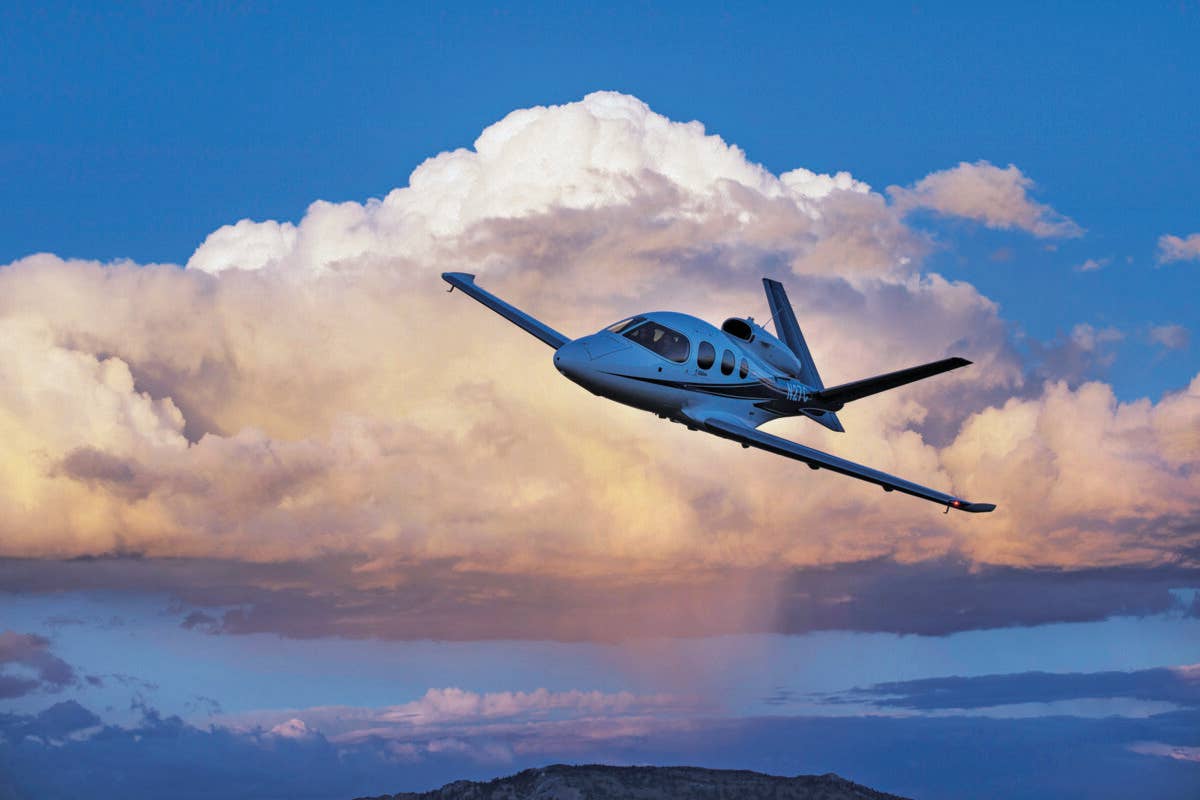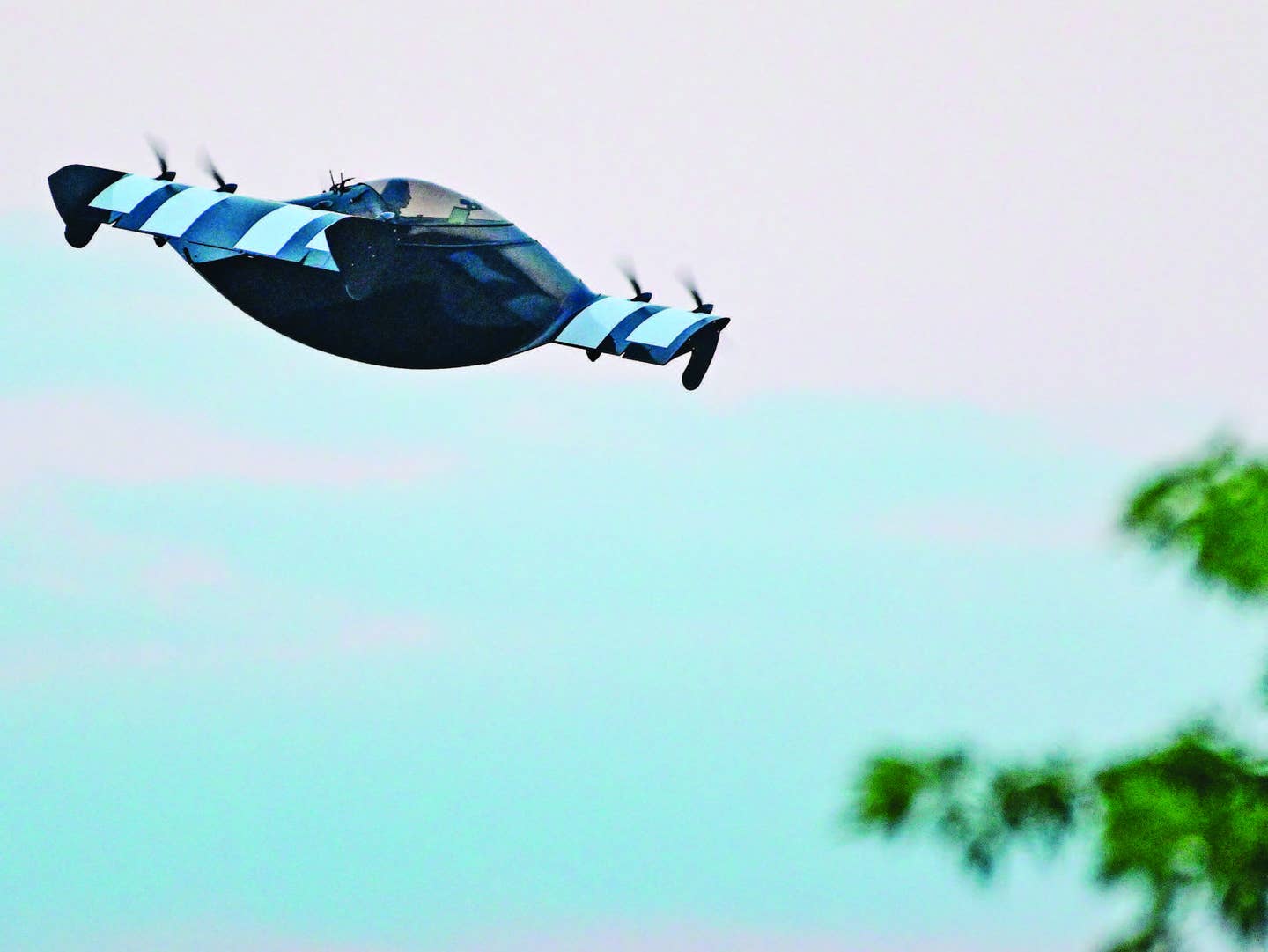
Apart from the Bonanza, most people would be hard-pressed to name many V-tail airplanes, but a list of no fewer than 142 of them can be found online. [Credit: Jessica Ambats]
One day back in ancient times, I went to Van Nuys Airport (KVNY) to report on a gadget that was supposed to improve the directional stability of V-tail Beechcraft Bonanzas. It consisted of a bent-up aluminum channel about 8 feet long, similar to a length of roof gutter, that screwed to the underside of the aft fuselage. Its creator explained that it trapped a stream of air and thereby kept the tail from swinging from side to side.
I did not see how this could be, but I flew the Bonanza, first without the channel, and then with it. I kicked the rudder pedals a number of times and duly noted my subjective impression of the damping—that is, the number and size of oscillations required to return to steady flight. I am embarrassed to report that I did feel that the airplane with the channel was a little stiffer directionally. Possibly placebo effect.
The V-tail empennage was invented and patented in 1930 by a Polish pilot and aircraft designer, Jerzy Rudlicki, but it remained a rarity. The Stanley Nomad sailplane appeared in 1938, and after being converted from a conventional to a V-tail, it competed impressively in the 1939 National Championships. Fatefully, one of those impressed was Walter Beech.
There was an upsurge of interest in V-tails near the end of World War II. The attractive idea, which persists in many people’s minds to this day, was that two surfaces would naturally have less drag and be cheaper and easier to manufacture than three. A P-63 Kingcobra—laminar-winged variant of the P-39—was even equipped with an experimental V-tail after some wind tunnel tests using a variable-dihedral model were conducted at the Langley laboratory of the National Advisory Committee for Aeronautics (NACA), NASA’s immensely useful and productive precursor. In 1944, the NACA published Technical Report 823 to summarize what was known from analysis and experience about V-tails. The report had an “on one hand, but on the other hand” tone, and the only definite conclusion you could draw from it was that a V-tail could be equivalent to a conventional one, but had no decisive advantage.
Still, whatever the Bonanza’s butterfly tail may have lacked in superiority, it supplied in novelty.
The rule of thumb for sizing a V-tail is that its projected areas, in profile and plan view, should be roughly equal to those of a conventional tail. You can perhaps fudge a bit on the side area because there are two directional stabilizers rather than one. The result is that the total drag-producing surface area of the V-tail is similar to that of the three-part tail (nominally consisting of two horizontal surfaces and one vertical one). It’s not clear whether weight is reduced. From the point of view of manufacturing cost, it’s convenient that the surfaces can be identical and that you need only two, but the V arrangement is structurally complex, involves greater loads in surfaces of higher aspect ratio, and requires mixers for control and trim to combine pitch and roll into movements of a single surface.
Beech marketers, not being under oath, habitually maintained that the V-tail Bonanza was faster than the conventional-tailed Beech Debonair, a claim that had the double distinction of being false and—because the asserted advantage was so small—meaningless. In anycase, people loved their Bonanzas. When the V-tail version breathed its last in 1982—appropriately, the final model was the V-35—its demise was due principally to a long string of fatal accidents caused by a fault in the structural design of the tail surfaces, but not to its V-ness.
Apart from the Bonanza, most people would be hard-pressed to name many V-tail airplanes, but a list of no fewer than 142 of them can be found online. Some are fanciful. Many, such as a number of Schreder and Schempp-Hirth sailplanes, are essentially the same design with minute variations. Some, like the F-117 and the Scaled Composites 401, use a V-tail for its stealth characteristics, not for any expected aerodynamic advantage. The V-tail has lately found a new home, however, in airplanes that carry a single jet engine on their back, in the style pioneered by the Luftwaffe’s 1945 Volksjäger, or People’s Fighter. Examples include the Cirrus Vision Jet, the similar but defunct Eclipse 400, and the remotely piloted Northrop Grumman Global Hawk. Obviously, a vertical fin in the jet exhaust is not a good idea, and endplate verticals are just too B-24 these days.
One variable in V-tail design that received a lot of attention from the NACA was the ideal dihedral angle.There seems not to be much consensus. The Bonanza used a very flat 30 degrees. A 1950s French jet trainer, the Fouga Magister, used 35, as did the Eclipse 400. The Cirrus jet seems to use about 42 degrees, and the Global Hawk 49 or 50. With the passage of time, there appears to have been a trend toward more dihedral and larger surfaces of higher aspect ratio.
One of the aerodynamic peculiarities of the V-tail is that it wastes a certain amount of the force it generates. Take, just for the sake of illustration, a dihedral angle of 45 degrees: In order to produce a downward force of 100 pounds, the two surfaces must generate 141 pounds of force with each surface pushing outward just as hard as it pushes downward. The side forces neutralize one another, but the effort is still there.
A persistent design challenge has to do with the effectiveness of control surfaces, like rudders, elevators, and the hybrid ruddervators. As you deflect a control surface, the lift force generated increases steadily up to about 15 degrees. The force curve then grows flatter because flow separates from the “upper” surface while the drag increases rapidly. There is a limit, therefore, to the amount of useful control surface deflection you have available; it’s around 30 degrees. In some maneuvers, spin recovery for instance, you might want to use full rudder and full elevator at the same time. But the deflections can't simply be added to one another. Instead, you have to increase the size of the tail surface or the control flaps, or both, to get the needed authority.
Comparing later V-tails with the Bonanza’s, I get the impression that Beech was too optimistic in designing its V-tail, and made the surfaces too small. Of course, that was the point: the V-tail was supposed to reduce weight and drag, and so the engineering push was to keep it small. Conversely, a V-tail like that on the Cirrus jet is used not to reduce drag or weight, but from practical necessity, and now we see designers being more conser-vative in their choices of area and span.
And if they still don’t get it right, there’s always that length of rain gutter to fall back on.

Sign-up for newsletters & special offers!
Get the latest FLYING stories & special offers delivered directly to your inbox






